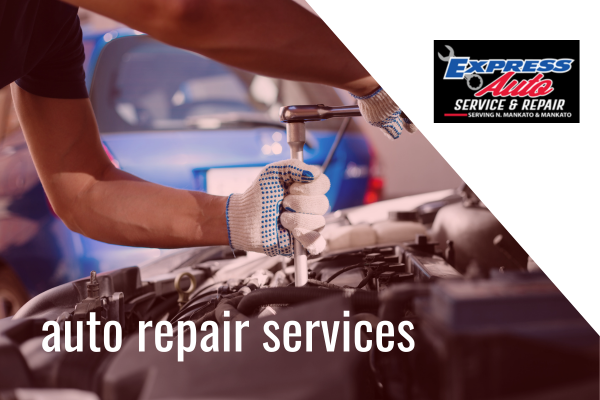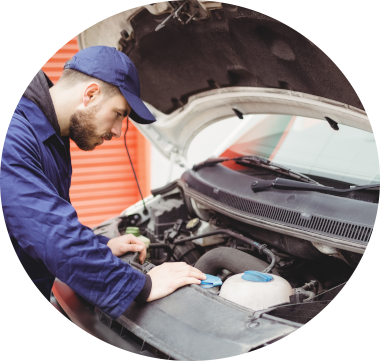All Categories
Featured

[/image]
When it comes to lorry upkeep, tires are frequently among the most overlooked parts, despite the fact that they play an important duty in the safety and effectiveness of your car. Tire rotation and alignment are 2 essential solutions that help ensure your tires use equally, last much longer, and remain to carry out at their ideal. Here's whatever you need to understand about tire turning and alignment and why they matter for your automobile.
What Is Tire Rotation? Tire turning is the procedure of relocating the tires from one setting to one more to make certain also use across all 4 tires. The front and back tires of a car wear at various prices because of the weight circulation and the reality that the front tires deal with both guiding and braking. By turning the tires routinely, generally every 6,000 to 8,000 miles, you can cancel the wear and expand the life of your tires.
In the majority of automobiles, the tires will certainly be revolved from front to back, and in many cases, side-to-side, relying on the tire type and your cars and truck's specifications. This guarantees that each tire bears an equal amount of tension and strain. Regular tire turnings also improve automobile handling and ride top quality, as well as add to much better gas effectiveness.
What Is Tire Alignment? Tire positioning describes readjusting the angles of your vehicle's wheels to guarantee they are located appropriately according to the supplier's specs. Appropriate positioning makes certain that your tires are alongside each other and vertical to the ground, which assists improve the general handling, security, and life expectancy of your tires.
There are 3 essential elements of positioning:
Camber: The tilt of the wheels when watched from the front. If the wheels lean inward or outside, it can trigger unequal tire wear. Caster: The angle of the guiding axis when seen from the side. Proper caster placement ensures stable steering and better lorry control. Toe: The angle at which the tires point inward or external when checked out from above. Wrong toe placement can cause tires to use unevenly and influence managing. Misalignment can occur due to variables like striking potholes, visuals, or driving over rough surface, and also normal driving over time can gradually trigger imbalance. Getting a placement check every 1-2 years or when you see managing issues is necessary for ideal tire efficiency.
Why Are Tire Rotation and Placement Important? Maximized Tire Life:. Tire rotation makes sure even put on throughout all four tires, avoiding premature tire substitute. Misaligned tires put on erratically, which can lead to the requirement for even more frequent tire replacements. Both tire rotation and placement increase the life expectancy of your tires, saving you money in the future.
Improved Safety:. Correct alignment aids maintain your automobile tracking straight, improving security and handling. Misaligned tires can bring about drawing, that makes it tougher to manage your vehicle, particularly at broadband or in emergency situation circumstances. Tire turning also ensures your automobile's handling continues to be consistent, improving your capability to quit swiftly and preserve control.
Better Fuel Performance:. When your tires are correctly lined up, they experience less moving resistance, meaning your engine doesn't need to work as hard to move the car. This minimizes fuel intake and boosts gas mileage. Misalignment can create your tires to drag, bring about inadequate gas performance.
Smoother Ride:. Misaligned or unevenly worn tires can trigger resonances in the guiding wheel or car body, which can be uneasy while driving. Regular tire turning and alignment can provide a smoother and quieter trip, reducing unneeded sound and vibrations.
Indicators You Required Tire Turning or Positioning. It is essential to be knowledgeable about alerting indications that your tires could need attention. Keep an eye out for:
Irregular Tire Put On: If you discover that one tire is more worn than others, it could be an indication that it's time for a turning or alignment. Guiding Drawing to One Side: If your car draws away, specifically when you're driving straight, it can show misalignment. Vibrations or Unusual Noises: If your wheel trembles or you listen to a buzzing or grumbling sound, your alignment could be off. Squealing Tires: A shrill squeal can signal imbalance or that your tires are used unevenly. If you discover any of these signs, it's a great concept to have your automobile checked as soon as possible to avoid more damage to your tires or shock absorber.
Exactly How Usually Should You Turn and Align Your Tires? Tire turning is normally recommended every 6,000 to 8,000 miles or every six months, depending upon your vehicle's guidebook and driving conditions. It's likewise an excellent idea to revolve your tires during oil modifications to make sure they obtain the interest they need.
For placement, many specialists recommend having your tires lined up as soon as a year or if you observe any type of managing problems. If you have actually recently struck a crater, curb, or another challenge, it's a great concept to have your placement inspected quicker to avoid uneven tire wear.

Conclusion: Keep Your Tires for Durability and Security. Tire turning and positioning are simple yet vital aspects of automobile maintenance that add to longer tire life, boosted safety and security, and better gas performance. By complying with the suggested service periods for tire turning and alignment, you can ensure your tires remain in leading condition, giving a smoother and much safer driving experience. Normal maintenance aids you avoid unexpected tire wear, costly repairs, and possible accidents, making it a sensible investment for your automobile's total performance.
Latest Posts
Picking the Right Roof Shade: Influence On Energy Performance
Check Out Brake Repair & More: Full Auto Care Solutions from Montclare Auto Repair
Searching for Budget-Friendly Oil Change Solutions in St. Louis? Car-X Delivers Quality Care
More
Latest Posts
Picking the Right Roof Shade: Influence On Energy Performance
Check Out Brake Repair & More: Full Auto Care Solutions from Montclare Auto Repair
Searching for Budget-Friendly Oil Change Solutions in St. Louis? Car-X Delivers Quality Care